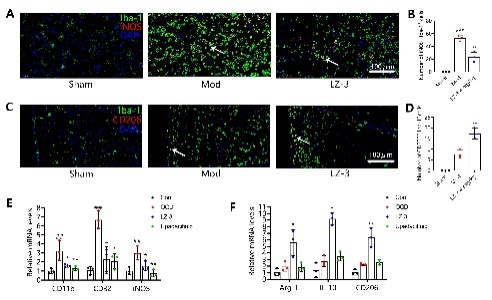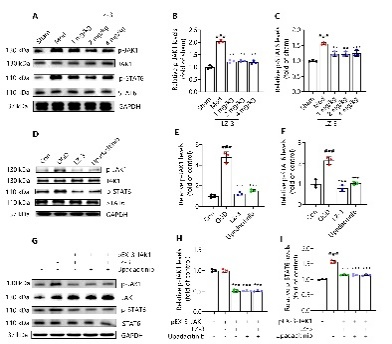中国神经再生研究(英文版) ›› 2023, Vol. 18 ›› Issue (11): 2429-2435.doi: 10.4103/1673-5374.371367
环状活性多肽Cyclo(MQCNS)有治疗缺血性脑卒中的潜力
Cyclo (MQCNS) has the potential to treat ischemic stroke
Zhibing Song1, 2, Xinyu Li1, Mengting Lv1, Yuchen Guo3, Shanshan Deng1, Yuefan Zhang1, *, Tiejun Li1, *
- 1School of Medicine, Shanghai University, Shanghai, China; 2College of Biological and Medical Engineering, Donghua University, Shanghai, China; 3College of Pharmacology, Anhui University of Chinese Medicine, Hefei, Anhui Province, China
摘要:
作者既往研究发现,单核细胞迁移抑制因子对脑卒中急性期缺血性损伤有神经保护作用,因此对抗炎五肽—单核细胞迁移抑制因子进行结构修饰,构建出一种结构及药理活性更优环状活性多肽Cyclo (MQCNS)(LZ-3),拟探索其对缺血性脑卒中的干预效果。实验首先以大脑中动脉闭塞方法构建了缺血性脑卒中模型,然后连续7d尾静脉注射LZ-3(2或4 mg/kg)进行治疗,结果显示,LZ-3能显著缩小脑梗死体积,减少皮质中神经细胞死亡,改善大鼠神经神经功能,减轻大脑皮质和海马组织病理损伤,降低血清和脑组织中炎性因子的水平。实验进一步在氧糖剥夺复氧诱导的BV2细胞模型中发现,LZ-3(100μM)可抑制JAK1-STAT6信号通路。最后发现LZ-3可调节缺血性脑卒中大鼠大脑皮质中小胶质细胞从M1到M2的极化,并可通过JAK1/STAT6信号通路抑制损伤BV2细胞的吞噬和迁移能力。因此得出LZ-3可通过抑制JAK1/STAT6信号通路调节小胶质细胞的活化,进而促进缺血性脑卒中后神经功能的恢复。
https://orcid.org/0000-0002-8319-8125 (Tiejun Li); https://orcid.org/0000-0003-3676-3280 (Zhibing Song)






